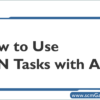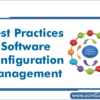What is the NoOps architecture?
Are you tired of traditional IT operations that involve a lot of manual work and maintenance? Have you heard of the NoOps architecture? If not, you’re in for a treat….
Read more »What is the difference Between NoOps vs. DevOps?
Have you ever heard of NoOps and DevOps? If you’re in the tech industry, you probably have. But what exactly do these terms mean, and how do they differ from…
Read more »Software Development Lifecycle (SDLC) – Simply Explained
SDLC stands for Software Development Life-cycle and it is a process through which any software or applications goes underway in certain procedures and in the end, we get that in…
Read more »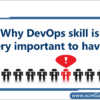
Why DevOps skill is very important to have?
In the event that association has worked with a spry web advancement philosophy, then they are accustomed to seeing the advantages of composed cooperation, speedier turnarounds, and checkpoints and changes…
Read more »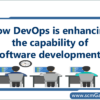
How DevOps is enhancing the capability of software development?
We all know that DevOps is an established relationship stage between development phase and IT Operations. It is vital that collaboration and communication between the two units are promoted from…
Read more »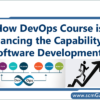
How DevOps course is enhancing the capability of software development?
How DevOps course is enhancing the capability of software development? Software Industry in these days adopting a new practice called “DevOps”. This word change the process of software development in…
Read more »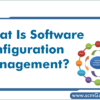
What Is Software Configuration Management, its importance & how to implement it?
Software engineers usually find coding to be the most satisfying aspect of their job. This is easy to understand because programming is a challenging, creative activity requiring extensive technical skills. It can mean getting to “play” with state-of-the-art tools, and it provides almost instant gratification in the form of immediate feedback. Programming is the development task that most readily comes to mind when the profession of software engineering is mentioned.
That said, seasoned engineers and project managers realize that programmers are part of a larger team. All of the integral tasks, such as quality assurance and verification and validation, are behind-the-scenes activities necessary to turn standalone software into a useful and usable commodity. Software configuration management (SCM) falls into this category—it can’t achieve star status, like the latest “killer app,” but it is essential to project success. The smart software project manager highly values the individuals and tools that provide this service.
This chapter will answer the following questions about software configuration management.
Read more »
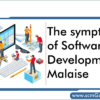
The symptoms of our software development malaise
Software development has traditionally suffered from producing end products with a definite lack of inherent quality. The symptoms of this quality lack are listed here:
- Software development projects are often delivered late and over budget.
- Often the delivered product does not meet customer requirements and is never used.
- Software products simply do not work right.
As we look into the symptoms of our software development malaise, five principal issues related to software development arise.
Lack of Visibility
Software is conceptual in nature. Unlike a bridge, a building, or another physical structure, it is not easy to look at software and assess how close it is to completion. Without strong project management, “software is 90% complete 90% of the time.” Through the adoption of SCM policy and the definition of the configuration management model of the software under development, all CIs, components, and subcomponents are immediately visible for versions, releases, and product families.
Read more »
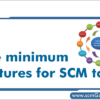
What are the minimum features for SCM tools? – SCM Tools Essential Features
SCM Tools
The minimum features for SCM tools are closely related to the task of handling the different product deliverables produced within the project software engineering process. Tool requirements and selection criteria are based on a series of features that provide a consistent look and feel with state-of-the-art software development environments. An SCM tool must have multiuser support, an intuitive graphical user interface, conformity to the organization’s development environment, scalability, flexibility in integrating other software development tools, ease of setup, modifiable models, process management, extensive support for the development phase, and management of nondevelopment objects.
Basic selection criteria includes the following:
Read more »
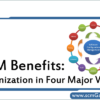
SCM Benefits the Organization in Four Major Ways – SCM Process Benefits
SCM benefits an organization in four areas: control, management, cost savings, and quality. These four benefits are mapped to an organization’s overall goals and objectives when the decisions are made to bring a SCM tool in-house. The features of a SCM tool further support these benefits.
SCM Benefits the Organization in Four Major Ways
Control
Control in SCM provides the ability to review, approve, and incorporate changes into a configuration item. There must be one controlling SCM tool so that there is only one set of training, license management, installation, and user procedures. All project personnel use the tool. Inherent in the tool is a standardized, measurable process for change. Integrity maintenance of CIs is enforced throughout the product life cycle. The tool permits only controlled change to the baseline CIs, and all changes are tracked.
Read more »

